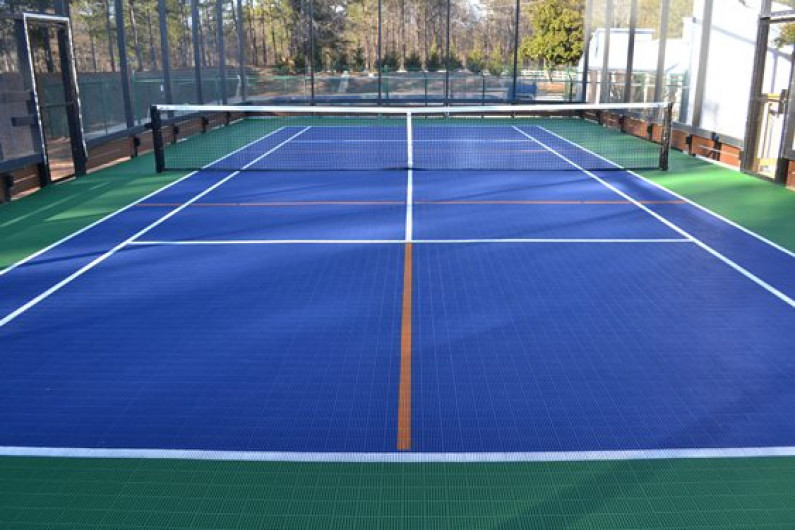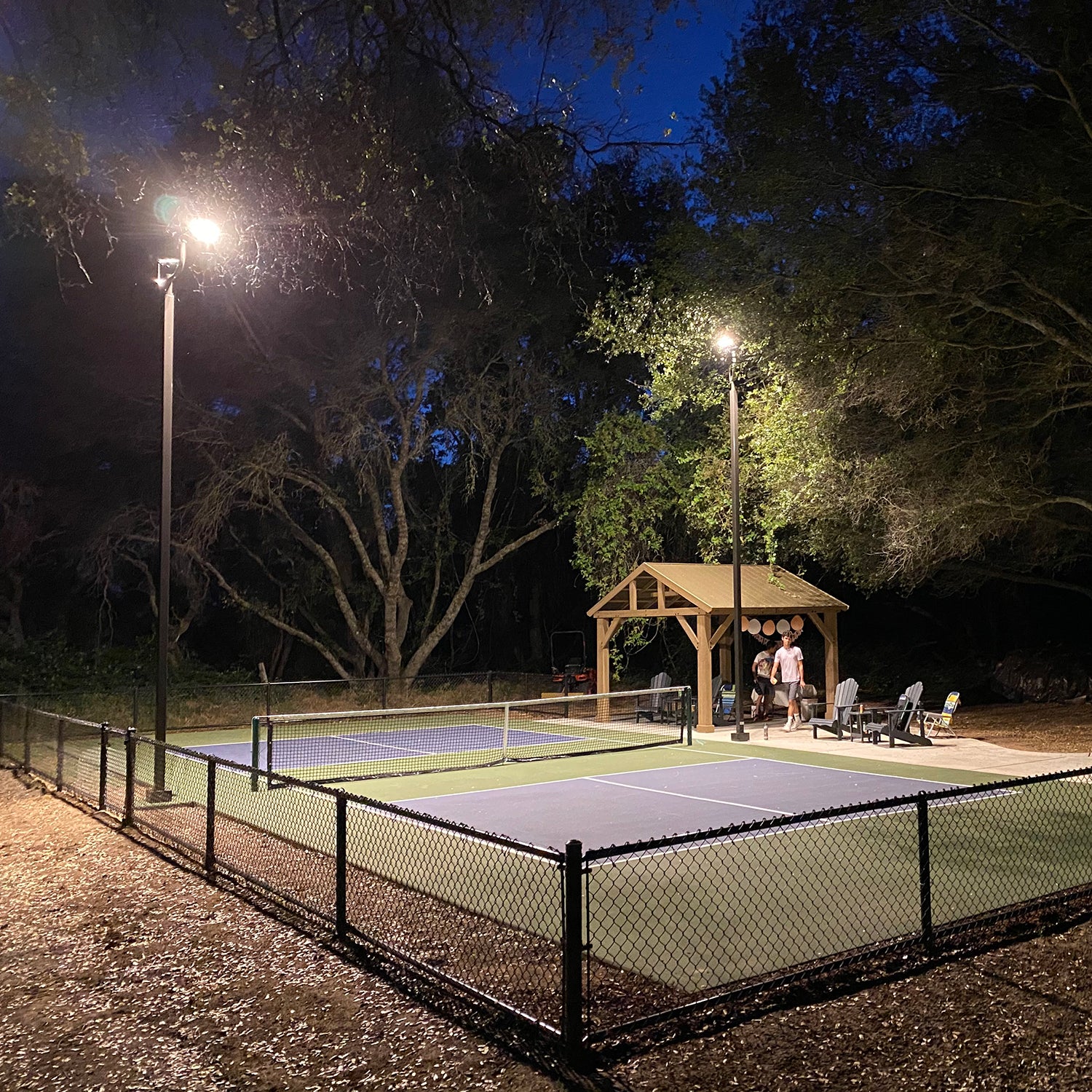Navigating Laws for Pickleball Court Building And Construction in Your Location
Constructing a pickleball court in your location needs a nuanced understanding of numerous local guidelines, including zoning regulations, building licenses, and safety and security requirements. Each district imposes particular standards that can substantially influence the usefulness of your job. Engaging with regional authorities and the neighborhood is crucial for guaranteeing compliance and fostering support. Nevertheless, browsing this regulatory landscape can be complex and taxing. What are the key steps you should consider to prevent possible pitfalls and ensure a smooth construction process?
Understanding Regional Zoning Laws
When thinking about the building and construction of a pickleball court, comprehending regional zoning laws is vital to making certain conformity and avoiding potential lawful problems. Zoning regulations dictate exactly how land can be utilized and commonly consist of specs pertaining to recreational centers. These legislations can differ considerably by district, influencing elements such as court positioning, noise, lighting, and dimension degrees.
Before initiating construction, it is necessary to consult the neighborhood zoning board or preparation division to establish the details laws that relate to your building. Particular zones may restrict entertainment tasks, while others might call for certain permits or adherence to specific guidelines. It is also important to consider problems, which identify just how far structures must be from building lines or various other buildings.
Additionally, exclusive growths, such as home owner organizations (HOAs), may enforce their very own guidelines regarding the building and use pickleball courts. Comprehending these policies can avoid pricey adjustments or litigation down the line. Engaging with neighborhood stakeholders and neighborhood participants can provide valuable insights and foster support for your job, guaranteeing that it aligns with the community's assumptions and requirements.
Getting Necessary Structure Permits
Just how does one navigate the complexities of acquiring essential building authorizations for a pickleball court? Usually, you will need to send a detailed website strategy that outlines the recommended court measurements, materials, and design.

Once permits are gotten, it is crucial to follow any type of assessment schedules and requirements throughout the construction phase. Maintaining interaction with local authorities will certainly assist in a smoother authorization procedure and assistance stay clear of potential troubles. By extensively preparing and comprehending the permitting landscape, you can successfully browse the intricacies included in building a pickleball court while remaining compliant with all regional guidelines.

Assessing Environmental Influence
An extensive assessment of environmental impact is vital when preparing the building and construction of a pickleball court. This analysis aids identify potential effects on regional environments, water sources, and neighborhood appearances. Secret aspects to consider include website selection-- ensuring that the court is not developed on environmentally sensitive land, such as wetlands or environments for endangered types
Dirt stability and water this hyperlink drainage patterns need to be evaluated to stop erosion and water pooling, which can negatively impact surrounding vegetation and wild animals. In addition, the choice of materials is crucial; going with sustainable and green choices lessens ecological damage.
The execution of efficient stormwater administration techniques is another crucial facet, as it helps alleviate drainage and sedimentation. Engaging with neighborhood ecological agencies can give valuable insights right into regulations and best methods specific to your area.
Finally, area input can be valuable in understanding any kind of local ecological worries and promoting support for the job. By carrying out a detailed environmental effect assessment, stakeholders can guarantee that pickleball court building lines up with lasting practices and contributes positively to the area's ecological health and wellness.
Following Safety Criteria
Making certain conformity with safety standards is crucial for the successful building and construction and operation of a pickleball court. Abiding by established security regulations reduces the risk of injuries and mishaps, ensuring a safe and secure setting for gamers.
Key safety and security criteria include proper court dimensions, surface materials, and illumination requirements. The court must fulfill the official measurements of 20 feet vast by 44 feet long for increases play, with proper barrier areas to avoid injuries from wayward spheres. Pickleball court construction. The surface area needs to be built from non-slip products to improve grip and decrease the possibility of drops
Furthermore, lights should be ample for night play, supplying uniform illumination to prevent shadows that can impede presence. Neighborhood building regulations might additionally dictate specific needs for fence and web height to ensure player safety and avoid unauthorized access to the court area.
Normal evaluations and maintenance are important to support these criteria in time. By prioritizing safety and security compliance, court proprietors not only secure visit site players yet additionally promote a positive online reputation within the neighborhood. This dedication to safety can urge higher involvement and pleasure of the sport, inevitably adding to its growth and sustainability.

Involving the Area in Preparation
Neighborhood involvement in the preparation stages of pickleball court construction can dramatically boost the job's overall success. Engaging local residents and stakeholders cultivates a sense of possession and motivates collaborative decision-making, which can result in more comprehensive assistance for the initiative.
To efficiently include the community, coordinators must initiate public conferences or workshops, supplying a system for homeowners to articulate their opinions and choices relating to place, design, and amenities. Studies and comments types can also be utilized to gather insights from a broader audience, making certain that diverse point of views are thought about.
In addition, developing a community advising board can assist in ongoing conversations and address concerns throughout the planning process. This board can consist of agents from numerous demographics, such as neighborhood schools, recreational organizations, and neighborhood watch, thus intensifying area depiction.
Efficient communication is crucial; updates regarding the job need to be on a regular basis shared via e-newsletters, social networks, or neighborhood publications. By focusing on neighborhood engagement, organizers can grow enthusiasm, reduce prospective opposition, and produce a pickleball center that genuinely resonates with regional values and needs. This collective approach not only enhances the project but likewise additional reading enhances area ties.
Final Thought
In conclusion, browsing the intricacies of pickleball court construction demands an extensive understanding of regional laws, consisting of zoning regulations, building authorizations, and safety standards. By sticking to these guidelines and promoting partnership, effective application of pickleball courts can be attained, promoting entertainment possibilities and neighborhood well-being.
Constructing a pickleball court in your location requires a nuanced understanding of various local guidelines, consisting of zoning laws, building licenses, and safety criteria.When thinking about the construction of a pickleball court, comprehending neighborhood zoning legislations is vital to making sure conformity and staying clear of possible legal issues. By completely preparing and recognizing the permitting landscape, you can efficiently navigate the complexities entailed in building a pickleball court while continuing to be certified with all local policies.
In conclusion, navigating the complexities of pickleball court building and construction requires a thorough understanding of neighborhood regulations, including zoning laws, structure licenses, and safety criteria. By adhering to these guidelines and promoting cooperation, effective implementation of pickleball courts can be accomplished, promoting entertainment opportunities and neighborhood well-being.
Comments on “How Local Rules Impact Your Pickleball Court Construction Plans”